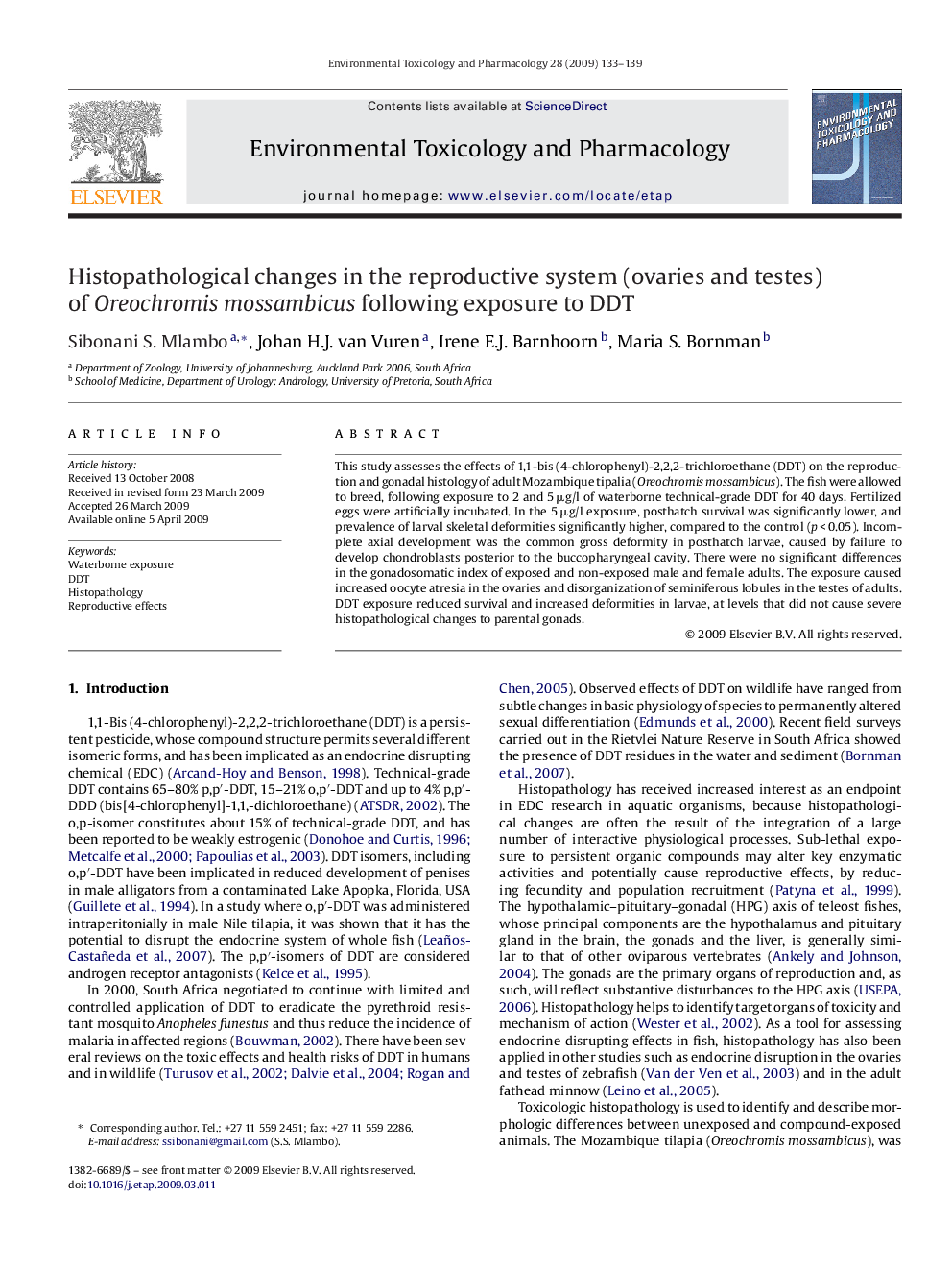| Article ID | Journal | Published Year | Pages | File Type |
|---|---|---|---|---|
| 2583860 | Environmental Toxicology and Pharmacology | 2009 | 7 Pages |
Abstract
This study assesses the effects of 1,1-bis (4-chlorophenyl)-2,2,2-trichloroethane (DDT) on the reproduction and gonadal histology of adult Mozambique tipalia (Oreochromis mossambicus). The fish were allowed to breed, following exposure to 2 and 5 μg/l of waterborne technical-grade DDT for 40 days. Fertilized eggs were artificially incubated. In the 5 μg/l exposure, posthatch survival was significantly lower, and prevalence of larval skeletal deformities significantly higher, compared to the control (p < 0.05). Incomplete axial development was the common gross deformity in posthatch larvae, caused by failure to develop chondroblasts posterior to the buccopharyngeal cavity. There were no significant differences in the gonadosomatic index of exposed and non-exposed male and female adults. The exposure caused increased oocyte atresia in the ovaries and disorganization of seminiferous lobules in the testes of adults. DDT exposure reduced survival and increased deformities in larvae, at levels that did not cause severe histopathological changes to parental gonads.
Related Topics
Life Sciences
Environmental Science
Health, Toxicology and Mutagenesis
Authors
Sibonani S. Mlambo, Johan H.J. van Vuren, Irene E.J. Barnhoorn, Maria S. Bornman,
